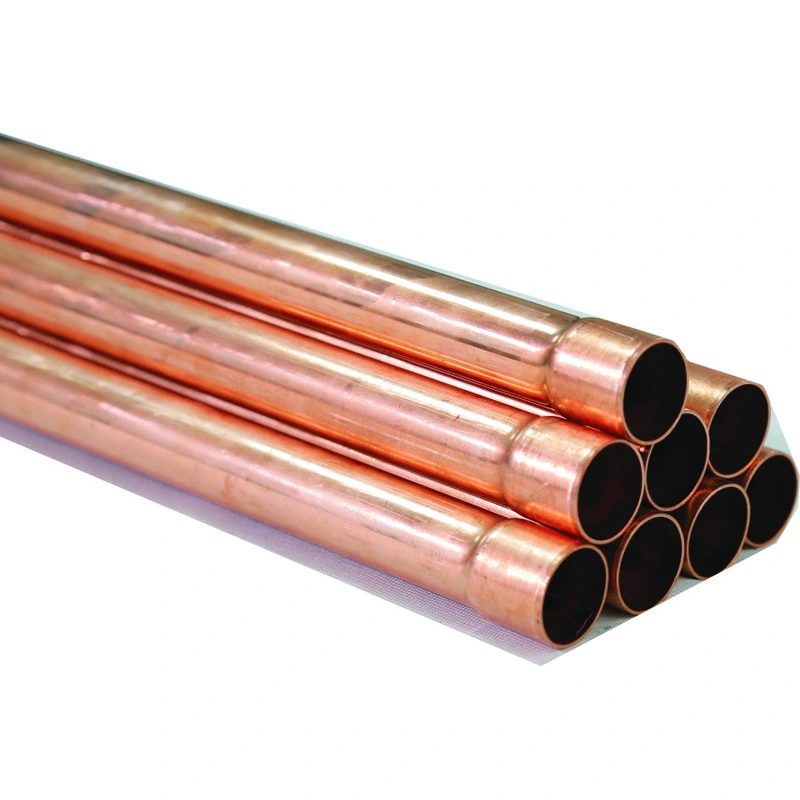Understanding Central Oxygen Supply Straight Copper Tubes: Essential Components of Medical Gas Systems
2025-01-09
In medical facilities, the safe and efficient delivery of oxygen to patients is critical for various treatments, surgeries, and recovery processes. One of the key components that ensure reliable oxygen supply is the "Central Oxygen Supply Straight Copper Tube." In this blog, we'll dive deep into what these tubes are, why they are important, and their role in medical gas systems.
What is a Central Oxygen Supply System?
A central oxygen supply system is designed to deliver oxygen from a central source, such as an oxygen tank or a liquid oxygen reservoir, to various points of use throughout a healthcare facility. This system is typically found in hospitals, clinics, and other medical facilities where oxygen is needed for patient care. The system is composed of a series of pipes, valves, regulators, and other components to ensure that oxygen is distributed safely and efficiently.
The Role of Straight Copper Tubes
Straight copper tubes are commonly used in central oxygen supply systems for a variety of reasons. Copper, a non-corrosive, durable, and non-reactive material, is the ideal choice for transporting oxygen. Here's why:
- Durability: Copper is known for its strength and durability. This ensures that the tubing can withstand pressure without the risk of rupture or leaks, which is especially crucial for high-pressure systems used in medical gas supply.
- Corrosion Resistance: Oxygen, when transported through pipes, can cause corrosion in some materials. Copper, however, is naturally resistant to corrosion, ensuring the longevity and safety of the tubing.
- Non-reactivity: Copper doesn't react with oxygen, making it a safe material for medical-grade oxygen supply. This prevents the possibility of chemical reactions that could compromise the purity of the oxygen or create hazardous byproducts.
- Malleability: Copper tubes can be easily bent and shaped to fit the necessary layout of an oxygen supply system. This flexibility is important when designing and installing a complex network of pipes.
Key Features of Central Oxygen Supply Copper Tubes
1. Straight Tubing: Copper tubing used in these systems is typically straight to ensure a smooth, uninterrupted flow of oxygen. The straight design also makes installation easier and more cost-effective.
2. Standardized Sizes: Central oxygen supply copper tubes come in standardized sizes to match the specific requirements of medical facilities. The diameter and thickness of the tubes are carefully selected to ensure the right pressure and flow rate of oxygen.
3. Seamless Construction: Many of the copper tubes used in central oxygen supply systems are seamless. This construction method eliminates weak spots, making the tubes more reliable and less prone to leaks.
4. Pressure Rating: Copper tubes used in oxygen supply systems are designed to handle high pressures, ensuring that oxygen is transported safely and effectively from the central supply to patient care areas.
Why Choose Copper Over Other Materials?
While other materials such as aluminum or stainless steel are used in piping systems, copper remains the preferred material for medical oxygen supply due to its unique properties. The primary reasons are its corrosion resistance, non-reactivity, and the fact that it can be sterilized without compromising its structural integrity. Copper is also naturally antibacterial, which reduces the risk of contamination in the medical environment.
The central oxygen supply system is the backbone of oxygen delivery in healthcare settings, and the use of straight copper tubes ensures that this critical function is carried out efficiently and safely. Copper’s properties—such as durability, corrosion resistance, and ease of installation—make it the ideal material for oxygen transportation in medical facilities. As healthcare systems continue to evolve, the role of copper tubes in these systems will remain vital for the safe and effective treatment of patients.



